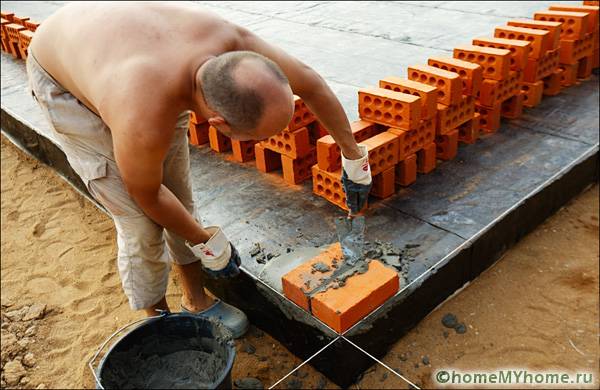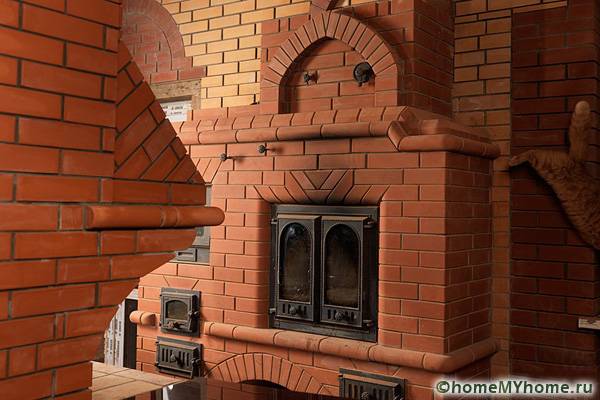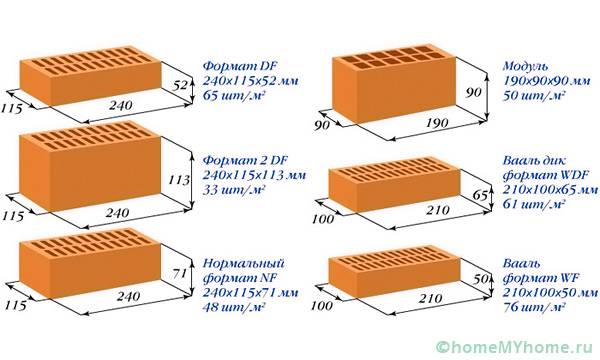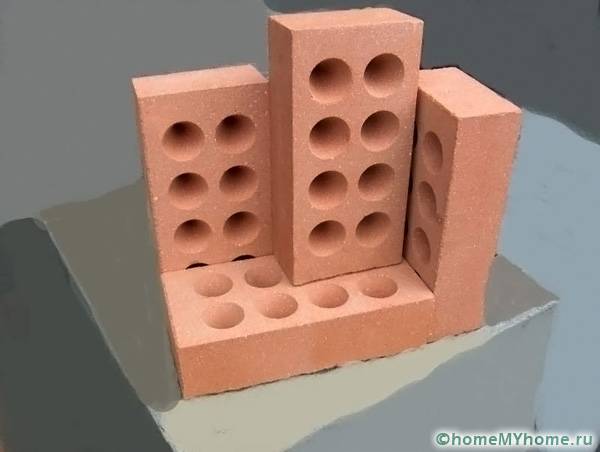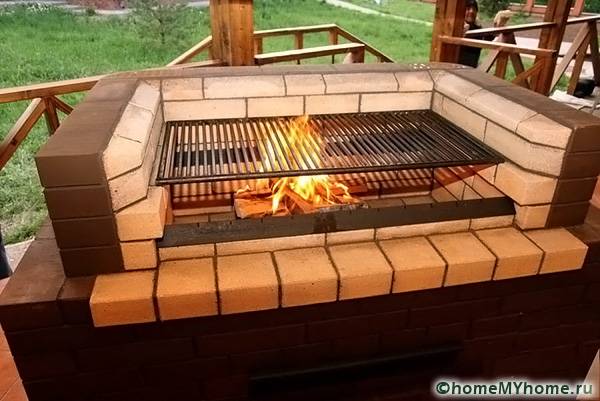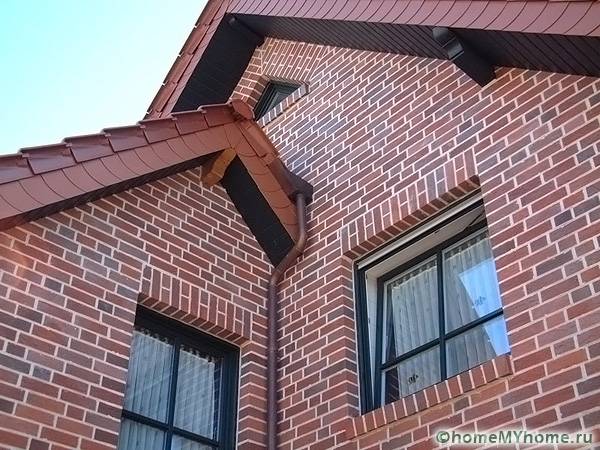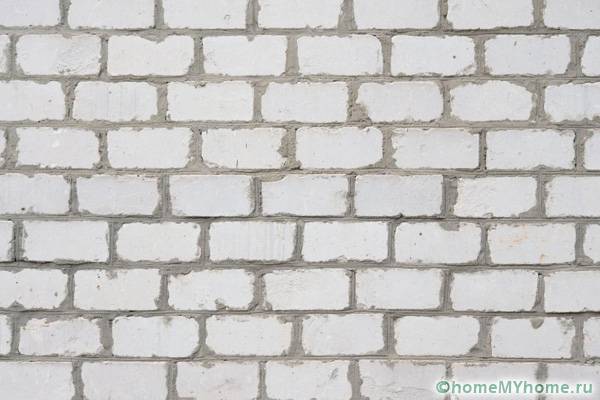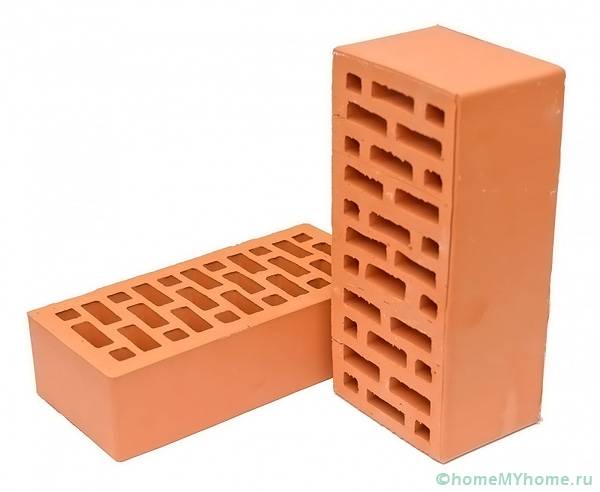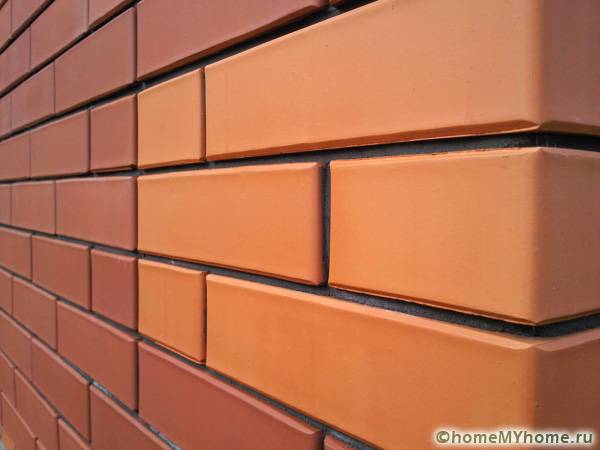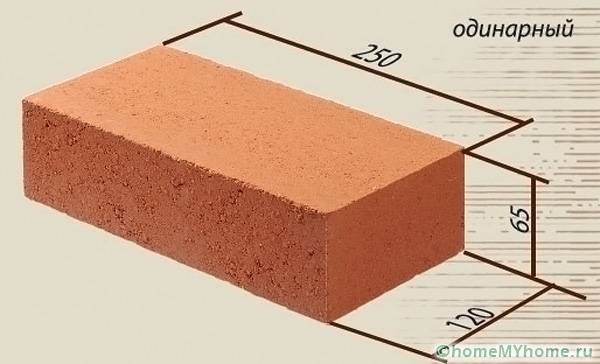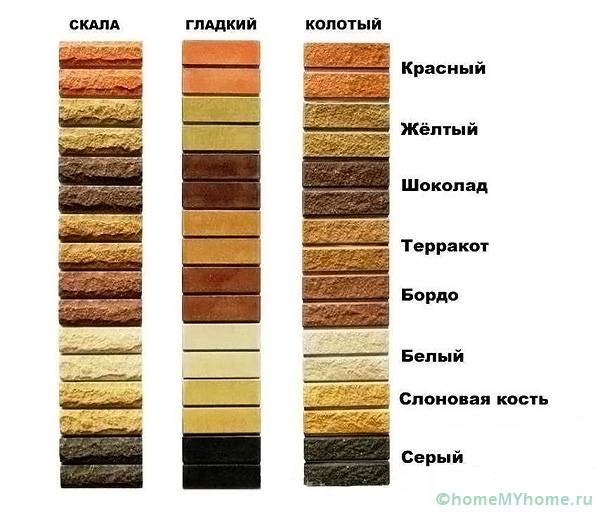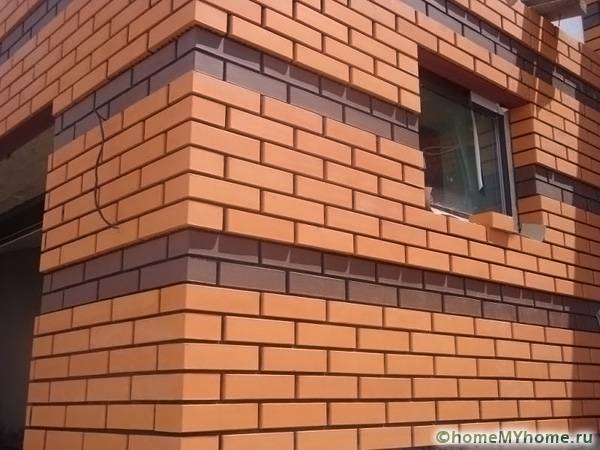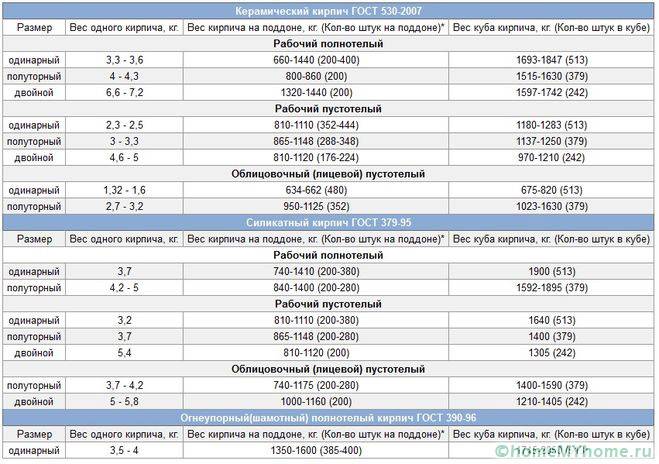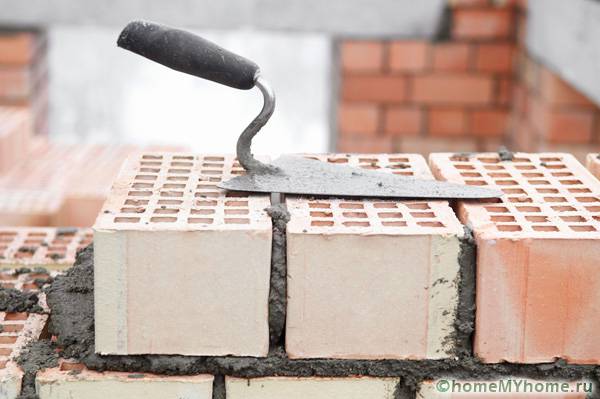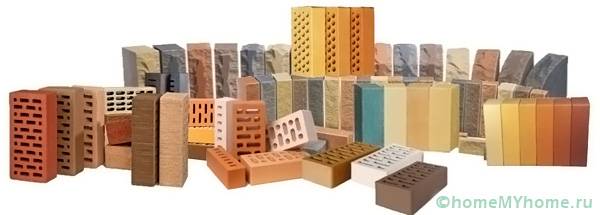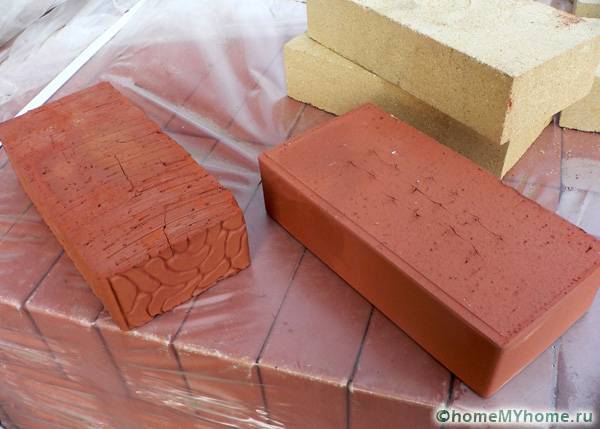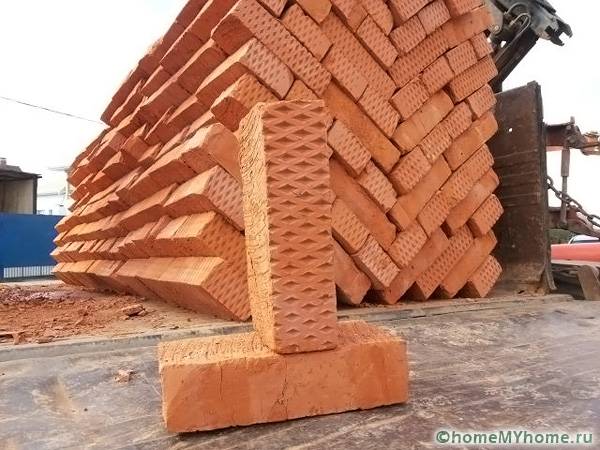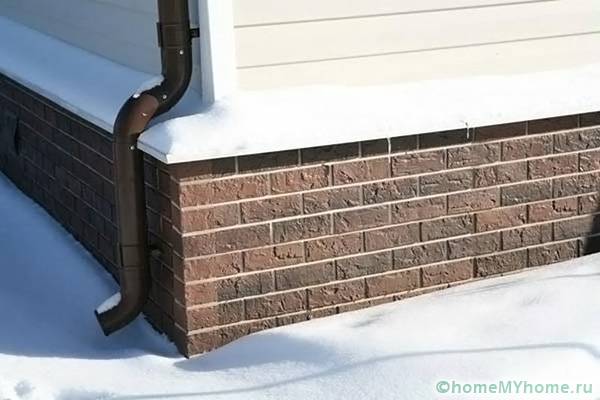Standard brick: dimensions, weight and main characteristics
PMost houses are built with bricks. This word was borrowed from the Turkic language. Before this material was used in construction, people built houses from plinth. It is a wide clay plate with a thickness of 2.5 cm. Brick walls are very durable. But it takes a long time to lay it. The standard brick, the dimensions of which are determined by GOST, is especially popular. Before starting construction, it is worth familiarizing yourself with the varieties and sizes of this material.
The content of the article
Where is standard brick used: weight, markings, dimensions
Brick is one of the most common building materials used for practical and decorative purposes. There are several varieties and standard sizes of the product on the construction market.
Most often it is used for the construction of houses and laying the foundation. The main areas of application include the following:
- Construction of walls, partitions and facade finishing.
Related article:
Decorative bricks for interior decoration. This type of finish is original, practical and durable. What types of such bricks exist and how to use it correctly? About this and many other things in a separate publication of our magazine.
- Arrangement of the foundation and basement floors.
- Facade erection and stairs.
- Laying of stoves, columns and fireplaces.
Great demand is characterized by Red brick... In terms of technical parameters, it is suitable for many jobs. This material is obtained by firing clay.About 10% of the market belongs to the silicate species, which is produced from a lime mixture.
Helpful information! When choosing a product, you should pay attention to the quality of the product. You need to see if there are cracks, chips or uneven color on the surface.
Standard product parameters
The brick is selected for the following parameters:
- strength;
- frost resistance;
- thermal insulation characteristics;
- sizes;
- Colour.
Materials, depending on their dimensions, are divided into one and a half, single and double. At the same time, the size of the standard product was developed over time. The height of the product is 65 mm, the width is 120 mm and the length is 250 mm.
The height of the double element is 103 mm, and the one and a half element is 88 mm. Moreover, double products have a "perforated" appearance.
Helpful information! The brick can be hollow or solid. In the latter variant, the voids occupy about 13% of the area. Solid elements are used for arranging columns, foundations, basements and fireplaces. Half of a hollow product consists of voids. It is used for walls so that the load on the base is less.
Video: Standard Product Sizes
Ordinary red brick: dimensions and main characteristics
Red brick is a versatile material. It is in demand for the construction of walls, stove structures, fireplaces and many other structures.
Such a product is of two types:
- Simple perfectly withstands temperature changes. Suitable for creating walls, as it heats the house with high quality.
- Refractory is made from highly durable clays. It is used wherever the temperature is very high.
Standard bricks with dimensions 65/120/250 are optimal for the transverse-longitudinal method of laying surfaces. Each facet of the product has a specific name: spoons, bed, poke. You should not purchase burnt products that have burned edges and a burned-out middle. A similar product can only be used for foundation.
The weight of a full-bodied product varies from 3.5 to 3.8 kg. The packaging displays information about the pressure that the material can withstand when compressed.
Helpful information! Upon impact, a quality product emits a ringing sound.
White brick: dimensions, applications and parameters
White or silicate bricks are produced by autoclave synthesis. In this case, a mixture of lime and fine sand is pressed and this product is made.
This material is of two types: facing and ordering. The latter type assumes further decorative finishing. The front option is itself a trim. It can also be full-bodied and hollow. The hollow element is used to relieve the load on the foundation. Silicate also differs in size, like the red counterpart.
Ceramic brick: dimensions and properties
Ceramic products are popular. Such material is divided into facing and building materials. In some cases, the view for facing is made by hand. It is used for various restorations of ancient buildings. To create a more reliable masonry, products with voids are used, which contribute to an increase in the thermal properties of buildings.
This product can have a variety of decorative surfaces: matte, with different textures and absolutely smooth.
One of the types of ceramic bricks is oven bricks. It must be of high quality and refractory material. When erecting furnace equipment, it is impossible to use products even with minor defects.
Facing brick: dimensions, characteristics and where it is used
The cladding variant has a smooth and neat surface. The most important tasks of bricks include protecting buildings from atmospheric precipitation, as well as creating an attractive appearance. In the front version, the two sides are decorated with a decorative surface.
Depending on the size, the facing material can be one and a half, single or double. Single versions can have the following heights: 65, 52 and 50. The dimensions of one-and-a-half versions can also vary. Non-standard products are used for restorations and difficult places during construction.
Related article:
Aerated concrete blocks: sizes and prices per piece. What is aerated concrete? How does it differ from foam concrete? Why is this material so popular? Read more in a dedicated publication.
How to choose a high-quality standard brick: dimensions and technical parameters
Previously, the most suitable dimensions were selected for manual construction. But in the factory, reference parameters are required. There are uniform standards for a single version - 25/12 / 6.25 cm. Other types differ in thickness. The reference weight for a single model is 3.4 kg.
Standardization has made masonry more comfortable. This Brick product fits well in the hand. The color depends on the clay used. The most commonly used red mixture. Also, clay products can have yellowish, white and terracotta shades. In some cases, pigments can be used to obtain the desired shade.
Strength is an important criterion for the selection of material. This indicator is indicated on the surface of the package. Frost resistance is measured in cycles. Each brand has its own meaning. Large and industrial buildings are built from materials that have an indicator of at least 35 cycles.
Appearance criteria
When purchasing products, you need to pay attention to the color. This indicator depends on the feedstock. Traditional varieties include red clay. White-burning mixture is rarer and more expensive.
Product weight
The weight of the product is an important parameter. The standard weight is 3.8-4 kg. If the product has voids, then its weight will be less. During the design, not the weight of an individual building element is taken into account, but the weight of a cubic meter of masonry and the mass of cement mortar. The specific gravity varies from 600 to 1800 kg per cubic meter. Knowing the weight of the structure can provide a suitable foundation for the structure.
Dimensions of brick structures
The size of the planned structure depends on the width of one building element. The standard width is 120 mm, so the width of the wall, depending on the number of layers, will be 120, 250, 510. This takes into account a gap of 10 mm between the elements. If masonry is made from thin partitions, then the thickness of the structure is 65 mm, since the brick is laid on the edge.
Helpful information! In order to build a durable and warm building, it is worth choosing a double or one-and-a-half brick with a hollow or porous structure. In this case, the masonry is made on a viscous solution so that the voids are not blocked.
Useful tips for choosing
It should be borne in mind that the quality of the material does not depend on the color, so you can choose products of any color palette.
If a brick is needed for facing, then it is worth purchasing the entire batch of building materials at once so that the finish is of the same shade.
The following material options are worth considering:
- Solid red is used for reinforcing load-bearing structures, erecting foundations and for arranging furnaces.
- For the brickwork of the furnaces, a refractory material is used, which is made from fired and refractory clay.
- Zabutovochny double version is recommended for the construction of frames, supports and load-bearing walls.
- For foundations, red and ceramic material is used.
- The basement is characterized by resistance to moisture and increased strength.
Correctly chosen building material is a guarantee of the reliability and durability of the future structure.
Video: how to choose a brick






